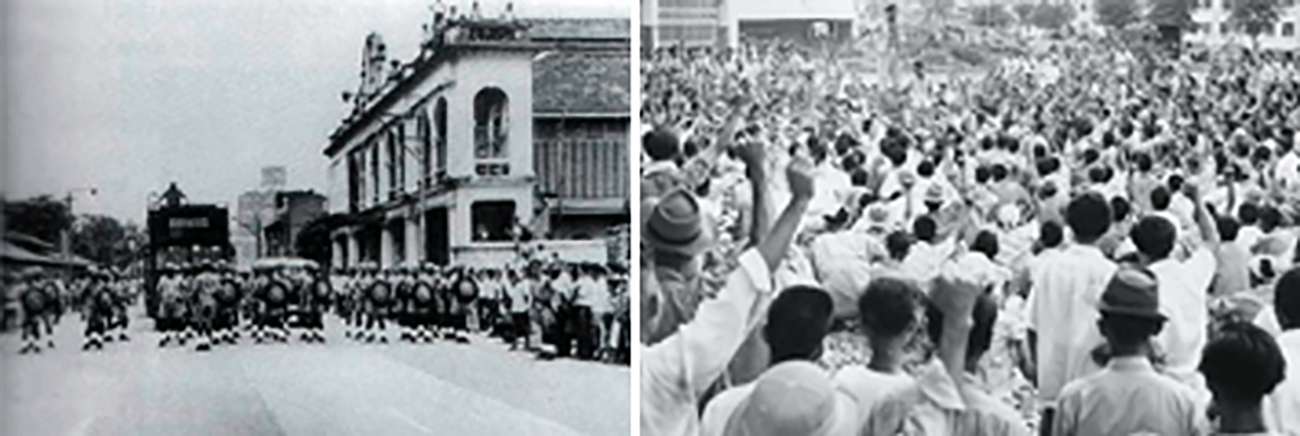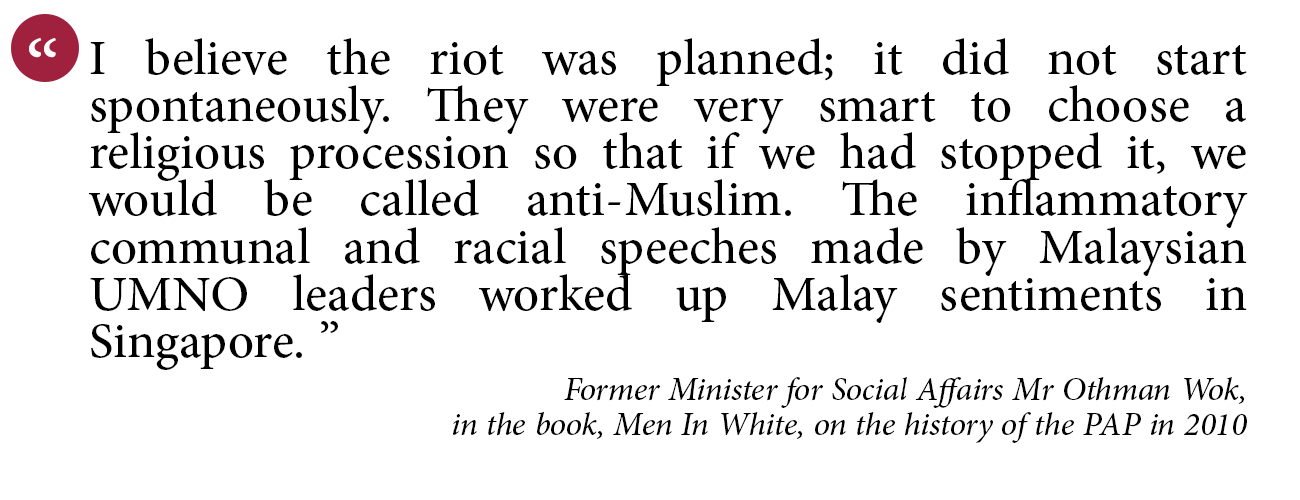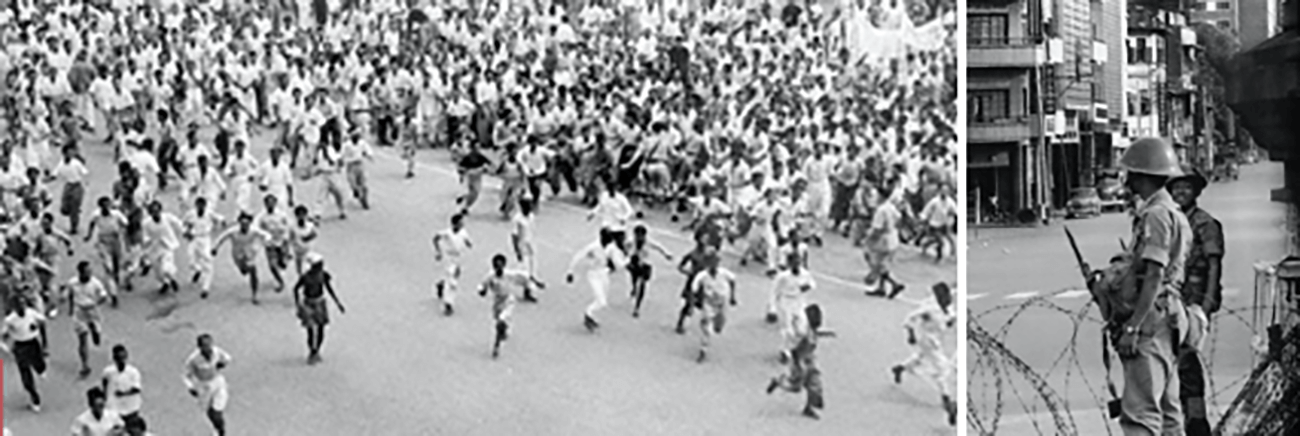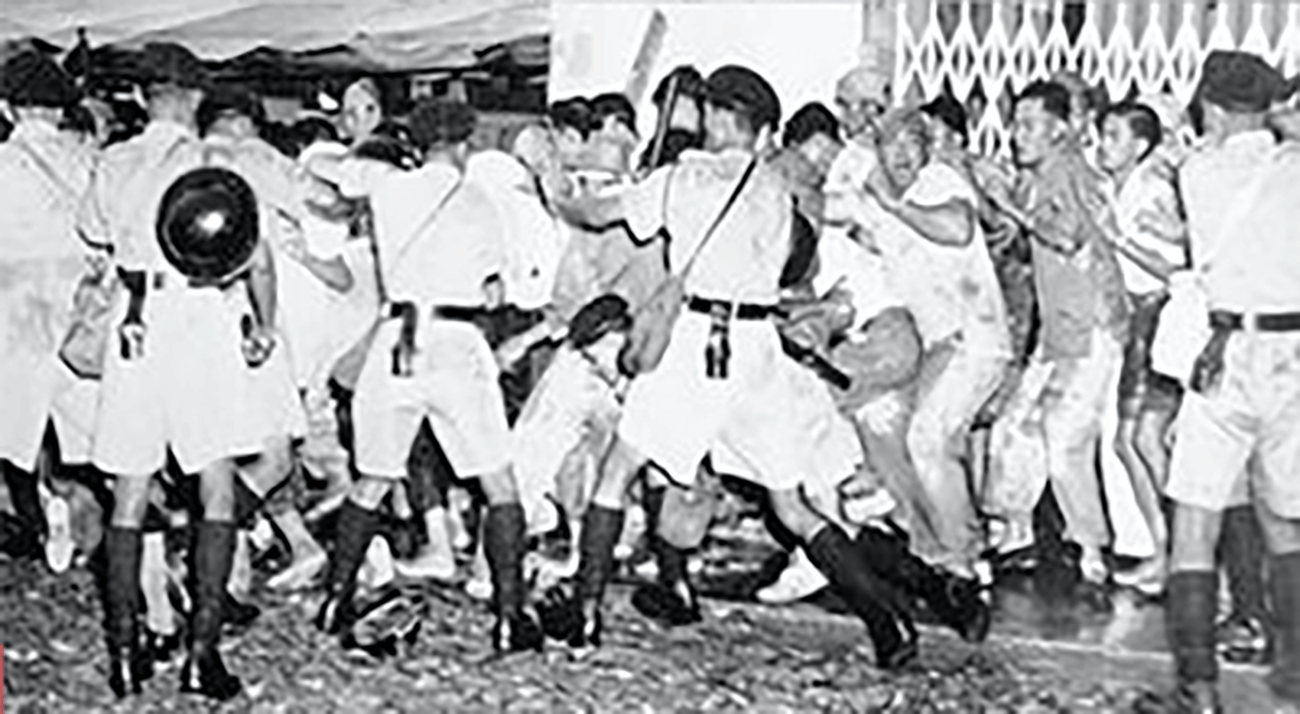Racial Riots (1964 and 1969)
Racial Riots (1964 and 1969)
On 21 July 1964, some 20,000 Malays gathered at the Padang for a procession to celebrate Prophet Muhammad’s birthday. Singing and waving banners, the celebrants were just passing Kampong Soo Poo when a glass bottle was hurled into the crowd, hitting someone on the head.
Angry exchanges between the marching Malays and the Chinese bystanders ensued, which soon escalated into violence with more bottles being hurled and punches thrown. As word of the riot spread, more joined in, resulting in fights breaking out across the island. The entire police force was activated and the armed forces mobilised. Tear gas was used to break up fights and an islandwide curfew was imposed.

The person who threw the bottle was never identified but the Singapore government eventually traced the incident to Malay UMNO activists led by then UMNO secretary-general Ja’afar Albar. Prior to the riots, Ja’afar Albar had started a campaign accusing the People’s Action Party (PAP) government of depriving the Malays in Singapore of the special rights given to their Malaysian counterparts.

It took 17 days for the situation to stabilise, during which Goodwill Committees were set up across all 51 constituencies at the time, consisting of community leaders of all races. They were tasked to restore harmony amongst the races by listening to and addressing the concerns of residents. Peace Committees were also formed in the areas hardest hit by the riots to counter rumours. In all, 23 people lost their lives and another 454 were injured.

However, peace was short-lived. Widespread communal riots broke out between the Malays and Chinese a month later, after the mysterious killing of a Malay trishaw rider in Geylang Serai.
Curfews were again imposed, and the police and military mobilised. On 14 September, 12 days later, calm was established. By then, 13 people had died and another 106 were injured.
The target was not just the Singapore Chinese, but also the Malay PAP leaders to pressure them into endorsing the primacy of Malays. But Othman Wok and his Malay comrades stood firm and kept the dream of a multiracial society alive.
In 1969, riots between Malays and Chinese erupted again, spilling over to Singapore from Kuala Lumpur where fighting had broken out as a result of unhappiness surrounding the general elections results and rumours pertaining to the Chinese and Malays.
The election was preceded by outbreaks of racial incidents that created a tense atmosphere. A Malay political worker had been killed by a Chinese gang in Penang, while a Chinese youth was shot and killed by police in Kuala Lumpur. While election day passed without incident, the parade by winning opposition parties DAP and Gerakan were alleged to be highly provocative, with non-Malays taunting the Malays. They were seen as an attack on Malay supremacy, though the overall election results still favoured the Malay.
On 13 May, just before UMNO’s procession, fist fights broke out in Setapak, in KL between a group of Malays and Chinese bystanders who taunted them, which escalated into bottle and stone throwing. Violence soon spread across the city and across the border into Singapore.
On 31 May, fuelled by rumours of the clash, Malay mobs and Chinese triads in Singapore began attacking one another. The seven-day clashes left four people dead and some 80 injured. However, the government was quick to contain the riots before they could spread. The Internal Security Department (ISD) stepped in with the police to suppress the conflict.
 (Image: National Archives of Singapore)
(Image: National Archives of Singapore)

